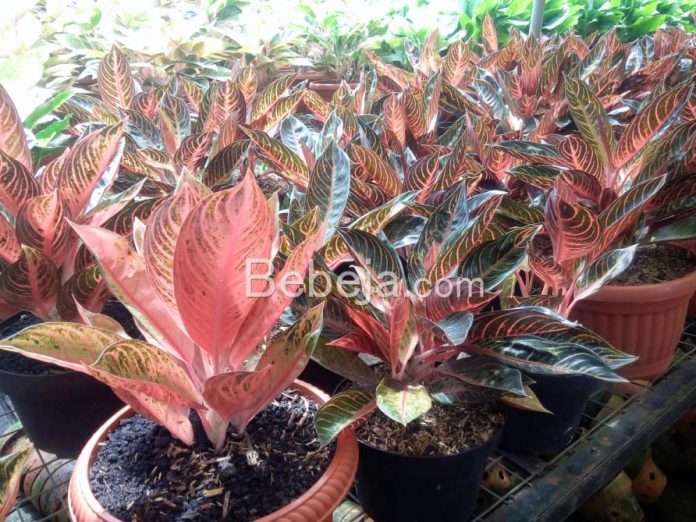Sun-dried aglaonema plants have been shown to increase the number of saplings. Some aglaonema species, including tiaras, hot lady, sexy pink, and harlequin, may produce 5-7 saplings compared to the 2-3 saplings they produced before sun-drying.
Drying should occur in the morning from 8:00-10:00 AM and in the afternoon from 3:30-4:30 PM. Initially, the leaf’s color will become lighter during the drying process. As long as the plant’s roots are healthy and able to provide sufficient water and nutrients to the leaves, the plant will thrive. After 2-2.5 months, saplings begin to dry, but the drying process is halted once they have two leaves.
The sunlight that hits aglaonema plants during drying facilitates the optimal evaporation (transpiration) process, which in turn enhances the transportation of nutrients from the roots to the leaves. As a result of photosynthesis, plants produce a surplus of carbohydrates, which encourages the growth of new saplings.
When drying aglaonema saplings, it is crucial to ensure that there is sufficient water in the media and leaves. To satisfy this requirement, the plant should be lightly watered 3-4 times a day using a spray. When drying aglaonema saplings, it is crucial to ensure that there is sufficient water in the media and leaves. Drying is an effective method for producing aglaonema saplings when there are only a few plants, but it can be cumbersome for larger quantities. To mitigate this, the percentage of shade can be reduced from 70% to 60%.
It is important to maintain the nutritional needs of the plants. Aglaonema, which produces offspring, requires higher nutrient levels. One way to meet this need is to combine multiple fertilizers designed for use with aglaonema every month. This combination of treatments, along with ensuring the health of the mother plants during the drying process, produces offspring in optimal condition.
Drying aglaonema is a recommended method for caring for this beloved and aesthetically pleasing indoor plant. The process of drying aglaonema enhances several key functions, including photosynthesis and food processing in the leaves, leading to healthier and luscious growth. However, it is important to perform this drying correctly, at the right time, and with care, so as not to induce plant stress or leaf burn.
A. Before drying in direct morning sunlight, clean aglaonema leaves by lightly spraying and wiping them with a clean cloth or tissue to remove dust.
B. Take care to dry the aglaonema between the hours of 6:00 AM and 9:00 AM, depending on the time of sunrise. Avoid drying the plant during midday or evening sun to prevent leaf burn or withering.
C. Adjust the drying time according to the type and size of the aglaonema. Saplings of the aglaonema can be sufficiently dried in the sun for 5-10 minutes, while adult aglaonema may require 15-20 minutes.
D. It is recommended to place the aglaonema in the shade or a cooler spot after drying to allow for resting and acclimatization
